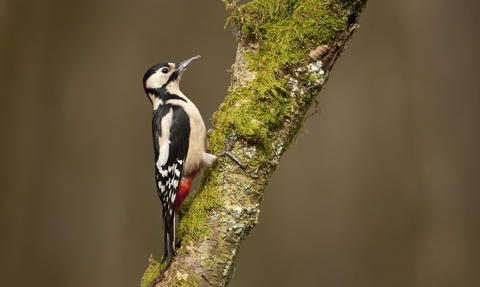
©Mark Hamblin/2020VISION
Fives places to hear woodpeckers drumming
A high pitch drumming sound echoing across a woodland in Spring is a sure sign woodpeckers are nearby. Of the three UK woodpeckers species, only the great spotted woodpecker (Dendrocopos major) and the rare lesser spotted woodpecker (Dendrocopos minor) make this characteristic call advertising their breeding territories to attract a mate. Other birds do this mainly through song.
Queenswood Country Park & Arboretum
The ancient native woodland at Queenswood is the perfect place to hear woodpeckers drumming in Spring. The great spotted woodpecker has distinctive markings: black and white spotted wings, a red underbelly, the male also has a scarlet patch on the back of his head. This shy bird though will attempt to hide, moving out of sight on the other side of a tree when it notices anyone. Seeing them is easier when the trees are bare. Families love the added attractions of a woodland playground, café and Gruffalo trail.
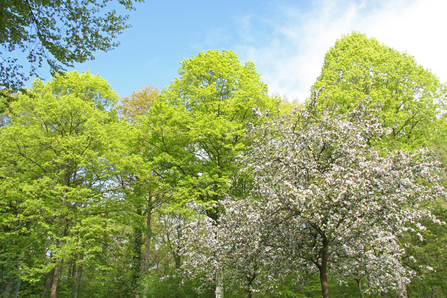
Lime Avenue Trees, Queenswood (c) Trevor Hulme
Lea & Pagets Wood Nature Reserve
Up on a ridge near Woolhope, this fine ancient broad-leaved woodland is home to great spotted woodpecker, with the smaller lesser spotted, the size of a sparrow, making an occasional appearance high up in the trees. The ‘drum’ of the great spotted woodpecker is a short, slightly accelerating series of strikes, delivered in less than a second. The lesser spotted has a quieter, more rapid drumming sound that doesn’t peter out at the end.
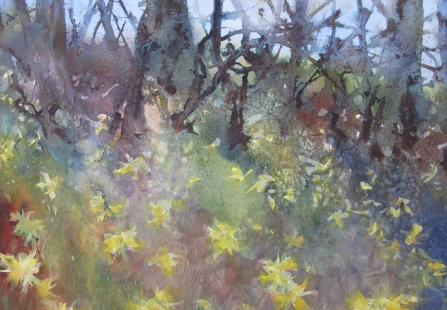
Wild Daffodils, Lea & Pagets Wood by Richard Bavin
Brilley Green Dingle Nature Reserve
This steep-sided wooded valley through which flows the Millhalf brook is a magical place and here the great spotted woodpecker is found on the older trees at the western end. Using their beaks, the birds probe tree trunks for insects and larvae, and excavate a hole in rotten trees for when breeding starts at the end of April.
Brilley Green Dingle in spring
Tretawdy Farm Nature Reserve
In the south of Herefordshire, close to The Doward, this former farm is a haven for wildlife with some areas being left to grow wild. Here the great spotted woodpecker is joined by the green woodpecker (Picus viridis), the largest of the three native woodpeckers that calls out its presence with a laughing yaffle sound when disturbed. The reserve supports some rare birds including a long-eared owl (Asio otus) caught on the trail camera at night time in 2023.
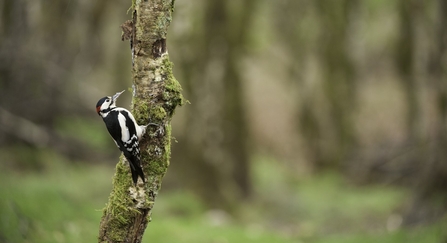
Great spotted woodpecker © Mark Hamblin/2020VISION
Motlins Hole Nature Reserve
The name probably refers to the steeply sided bowl in which the nature reserve sits. There are many fine, semi-mature oak and ash trees ideal for woodpeckers. Selective thinning of the dense woodland has increased light levels allowing nature regeneration to happen, essential for woodland birds to breed. Recent successes include wood and willow warblers. Other reserves nearby worth a visit are Romer’s Wood and Upper Swingley Wood.
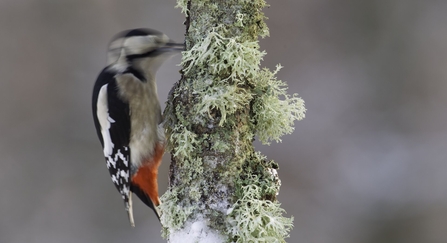
Great spotted woodpecker © Peter Cairns/2020VISION
